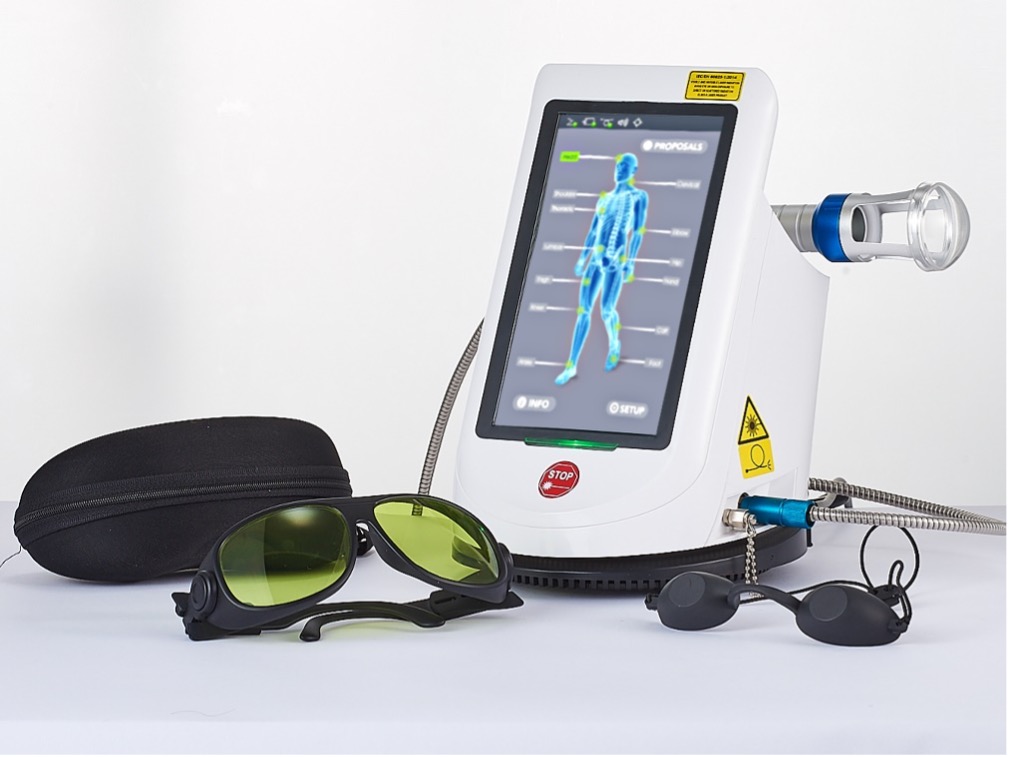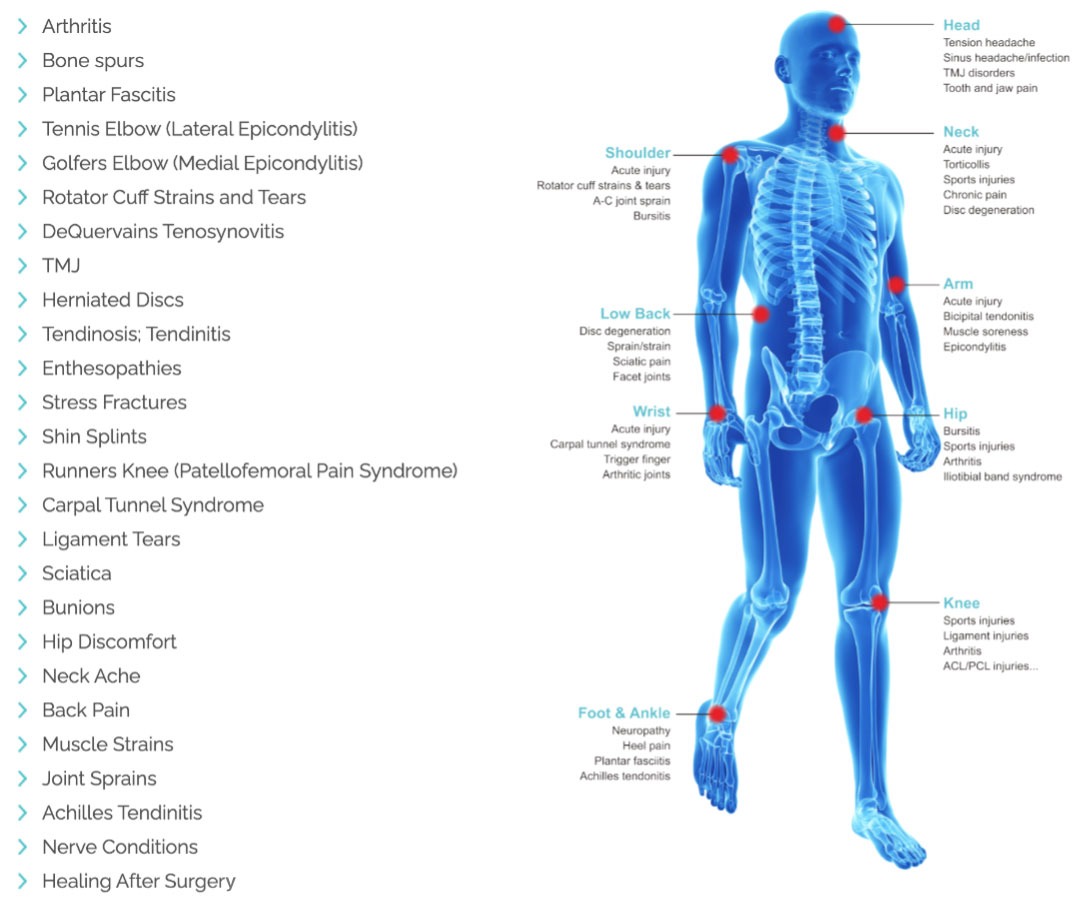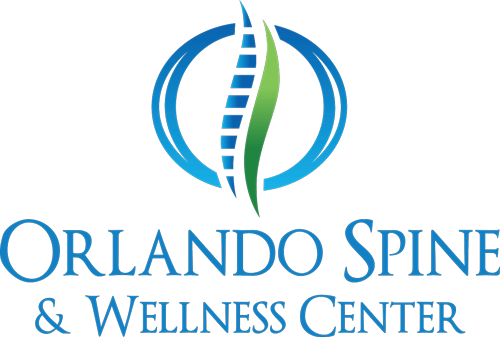Class IV Laser Treatment
What is Laser Therapy?
Laser therapy is a common, non-surgical, and non-invasive way of treating various conditions. It can be used safely on almost every area of the body and can help with both acute and chronic injuries, pain, stiff joints, arthritis, disc disorders, muscle spasms and much more. This kind of treatment can deliver precise amounts of energy to each target area, causing minimal damage while providing long-term results.


How Does Laser Therapy Work?
This treatment works through photobiomodulation (PBM), a process where photons are absorbed by several different components of our tissues, called chormophores. A sufficient amount of light needs to reach the targeted tissue to get the best therapeutic result. Through this procedure there are various benefits to be gained:
• A boost in cellular metabolism
• Reduction in muscle spasms
• A decrease in pain
• Improved healing to damaged tissues
By applying stimulation to the specific wavelengths that affect the cell receptors inside our body, laser therapy can modify the effects of injured tissues. As such, it can reduce the overall duration of inflammation, while enhancing the body’s healing and repair capabilities. Here are just a few results that have been observed in various clinical studies as a result of laser therapy:
• Better vasodilation
• Better collagen production
• Better cell membrane
• Better cell metabolism
• Better lymphatic response
• Better microcirculation
• Better nerve regeneration
• Better pain threshold
• Better bone and tissue repair
• Better enzyme response
• Reduced edema magnitude
• Reduced duration in inflammation
How Effective is Laser Therapy?
Laser therapy provides the body with a series of healing responses, where patients will feel a wave of soothing warmth which signals the beginning of the process. The modulated cellular activity leads to an improvement in local circulation and decreased pain in the areas being treated. As a result, laser therapy can significantly enhance and accelerate our body’s natural repair and defense mechanisms.
Because of this, laser therapy is particularly useful for inflammation, workout and sports injuries, and some disease processes. For a successful treatment program, it’s best to undergo multiple treatments, where the number of weeks will depend on the severity of symptoms and your condition. Laser therapy is clinically used for the following conditions:
• Neck Pain
• Temporomandibular Joint (TMJ)
• Elbow & Joint Pain
• Shoulder Pain
• Low Back Pain
• Fibromyalgia
• Arthritis
• Sciatica
• Soft Tissue Damage
• Sports Injuries
• Plantar Fasciitis
Chronic Conditions
When it comes to chronic conditions, research shows that therapy lasers can be used to combat consistent pain along with promoting circulation in damaged tissues. Laser therapy can prove to be a powerful solution when it comes to reducing pain without the side effects that come with medication.
Acute Conditions
Laser therapy has also been effective when it comes to treating acute conditions. It can bring the pain under control swiftly, assist with the healing process, and help to promote better results.
Post-Activity Recovery
Laser therapy has proved to be effective in improving recovery times after a workout or activity. It is also capable of reducing delayed onset muscle soreness (DOMS).
Why Choose Laser Therapy?
If you’re experiencing pain, laser therapy could be the best option for you. Whether you have muscle spasms, soft tissue problems, sprains or strains, neck or back pain, or other painful injuries or conditions, laser therapy can help. Moreover, laser therapy is FDA-cleared and it adheres to strict ISO standards to ensure that you have a safe and non-invasive alternative to surgery and drugs.
What to Expect from Your Laser Therapy
If you’ve never had laser treatments done before, it’s only natural to be nervous about your first time. However, many patients report it to be a pleasurable experience, where you will feel warm, soothing and relaxing sensations during your sessions. These feelings are a reflection that your cells are getting the stimulation they need to promote healing. Because laser treatment is non-surgical and non-invasive, you’ll be able to go home on the same day as the treatment and quickly go back to your routine. Although, it’s best to avoid strenuous and direct exercise to help speed up your recovery process. The Doctor who supervises your laser therapy treatments will give you post-treatment advice.
Is Laser Therapy Safe?
Laser therapy devices were cleared by the FDA in 2003 for the efficacious and safe increase of micro-circulation and reduction of pain. As such, therapy lasers are an effective and safe option for treatments that involve musculoskeletal pain as a result of injury. The biggest risk when it comes to laser therapy is to our eyes — this is why we always use certified, protective eyewear in each one of our laser therapy treatments.
Is Laser Therapy Painful?
When performing laser therapy, the device will be administered directly to the skin since laser light isn’t able to penetrate through clothing. This means that the device will be touching your skin, where you’ll feel soothing warmth during your therapy. Many patients who receive laser therapy treatments provide great feedback, saying that the experience is enjoyable. Patients also report that getting treatments using higher-power lasers can rapidly decrease the pain in their muscles, thus further helping with their recovery. Those who suffer from chronic pain can also see that this effect is certainly pronounced, which is why laser therapy is a great solution for treating all kinds of pain.
How Many Treatment Sessions are Needed?
There are key factors that will play a role in determining how many treatments are needed, which are:
• The patient’s response to the treatments
• The nature of their condition
Most laser therapy plans will provide around 6 to 12 treatments, with more treatments required for long-standing chronic conditions. You only need to speak to your doctor to develop a treatment plan that’s best for you and your condition.
How Often Should a Patient Get Treatments?
Many clinicians encourage their patients to get 2 to 3 treatments each week at the beginning of their treatment. Because the benefits of laser therapy are cumulative, experts suggest incorporating laser therapy in a patient’s plan of care. This should be done in the early stages, as frequent treatments can help to hasten the recovery process. As the symptoms resolve, treatments may be administered less frequently.
Does Insurance Cover Laser Therapy?
In general, insurance won’t reimburse patients for laser treatments even if there are codes that may be used to submit for such services. Laser therapy treatments are usually seen as a cash transaction between the patient and the clinic, where the average cost of treatment will vary throughout the country. Luckily, many clinics will provide discounts when patients purchase packages.
Can I treat a patient with metal implants?
Yes. Laser is light and would be reflected from the metal. It will not get absorbed and heat- up the metal like ultrasound does. You can safely treat over plates, pins, screws, knee, and hip replacements, and even metal clips for a patient who has had surgery. To demonstrate this, hold a metal object in your hand and run the laser over the back of your hand. You will be able to feel that the metal does not heat up.
I was just injured, or had surgery – how soon can I treat using laser?
Right away. Laser therapy should be administered as soon as possible after acute injuries, trauma, surgery, etc.
INJURED IN AN AUTO ACCIDENT?
Schedule your free consultation today!
Please do not submit any Protected Health Information (PHI). (Required*)
OFFICE HOURS
- 9am - 12pm | 1pm - 6pm
- 8am - 12pm | 1pm - 5pm
- 8am - 1pm
- Closed
